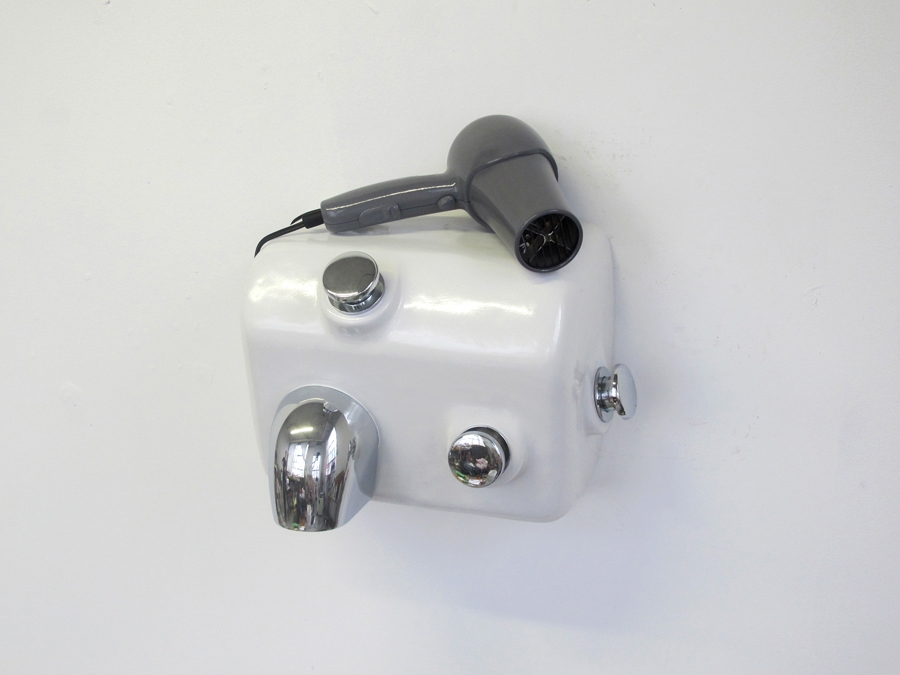Paul Gabrielli combines and assembles everyday objects and presents them as sculpture with a style that seduces both with its clarity and the puzzlement that it induces. Generally, his show at Invisible–Exports in New York last year, included objects such as a soap dispenser with a yellow plastic air freshener stuck on it. Gabrielli often returns to this strange doubling up of objects. The show also contained a set of found objects – stripy cloth, for example – that had been manipulated and packaged in clear plastic containers backed by shiny landscape photographs, as though they were meant to be sold. Gabrielli does not title his works, because to do so would be to provide too much explanation. So what happens is that one looks at the work and ruminates about the meaning. The generic objects that he uses – alarms, hand dryers and air fresheners – are metaphors for humanistic thoughts, because they make one think of what these devices resemble, and it is often parts of the body. They are displayed provocatively in the gallery, where they might actually be found in real life: a fire alarm high on the wall, a sculpture of a camera near the door.
Yet there may be either logic or confusion about the combinations. Gabrielli sometimes includes videoworks within his installations too. There is one called Dark Movie (2008) in which a boy stares straight ahead expressionlessly (under Gabrielli’s instruction, he is thinking about his own body as he looks at the camera), which adds to the mystery and to the clarity. He is a beautiful boy, alive, human, in front of the moving sea. And it makes one think about him, and all the other things in the room around him. Paul is really a great artist: I met him when he was a student, and my friendship with him is a big part of my life. He is a great inspiration.
This article originally appeared in the March 2012 issue.
